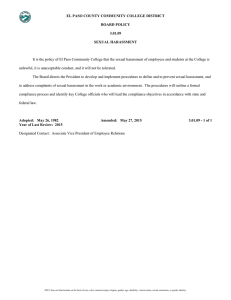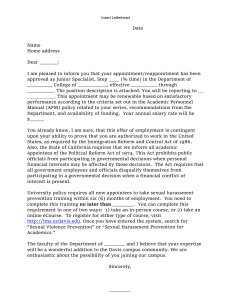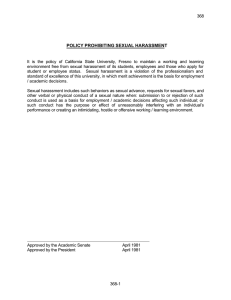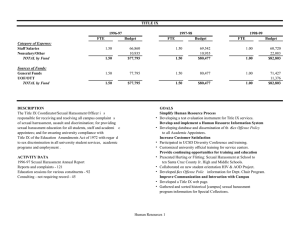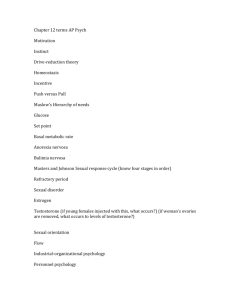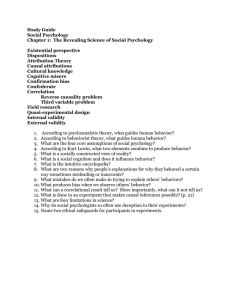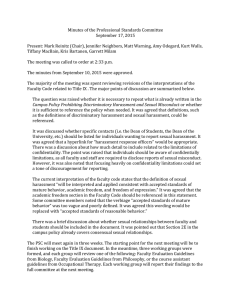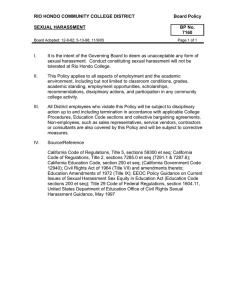Recap of attributional analysis
advertisement
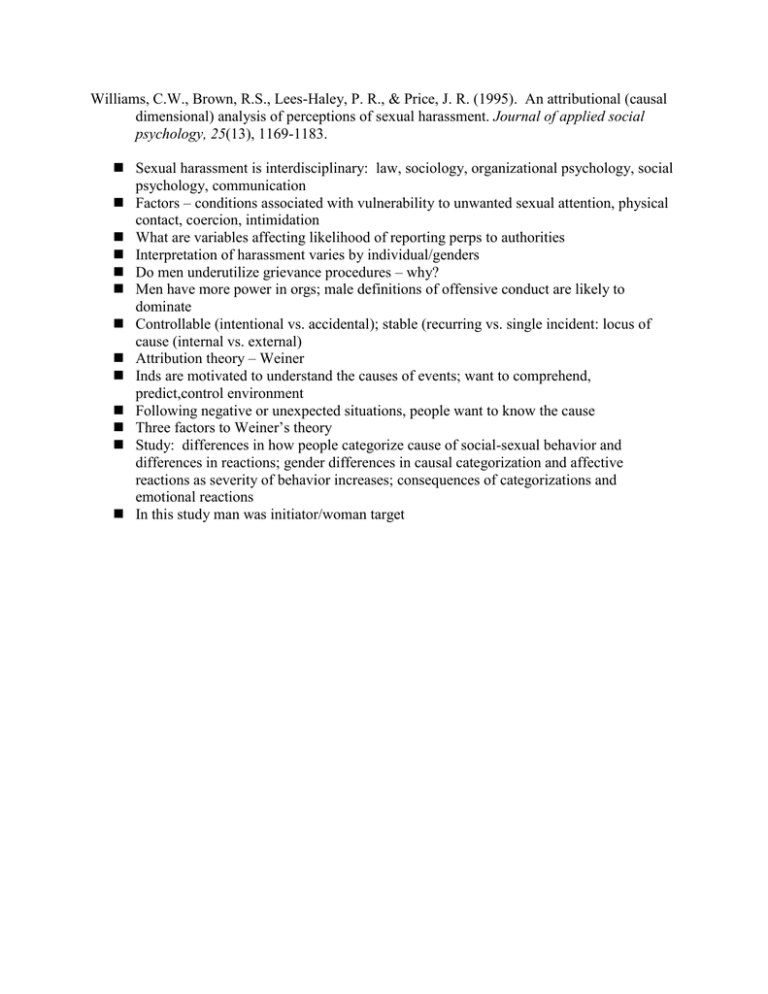
Williams, C.W., Brown, R.S., Lees-Haley, P. R., & Price, J. R. (1995). An attributional (causal dimensional) analysis of perceptions of sexual harassment. Journal of applied social psychology, 25(13), 1169-1183. Sexual harassment is interdisciplinary: law, sociology, organizational psychology, social psychology, communication Factors – conditions associated with vulnerability to unwanted sexual attention, physical contact, coercion, intimidation What are variables affecting likelihood of reporting perps to authorities Interpretation of harassment varies by individual/genders Do men underutilize grievance procedures – why? Men have more power in orgs; male definitions of offensive conduct are likely to dominate Controllable (intentional vs. accidental); stable (recurring vs. single incident: locus of cause (internal vs. external) Attribution theory – Weiner Inds are motivated to understand the causes of events; want to comprehend, predict,control environment Following negative or unexpected situations, people want to know the cause Three factors to Weiner’s theory Study: differences in how people categorize cause of social-sexual behavior and differences in reactions; gender differences in causal categorization and affective reactions as severity of behavior increases; consequences of categorizations and emotional reactions In this study man was initiator/woman target

